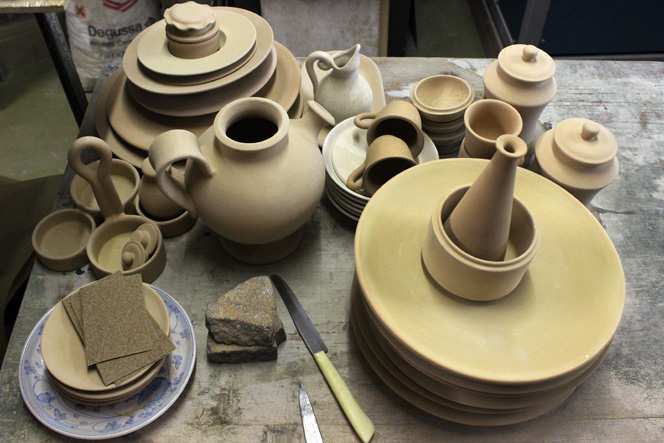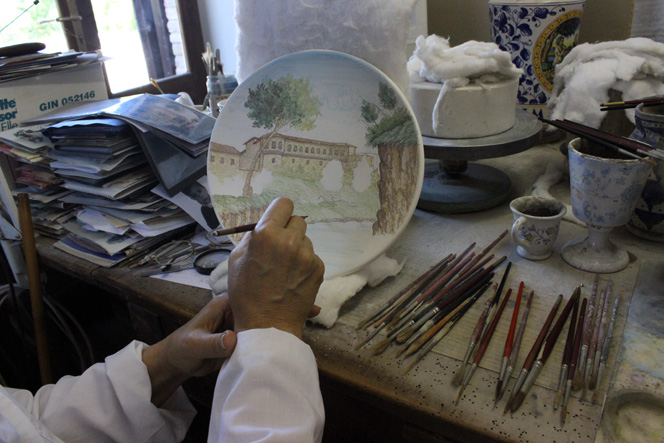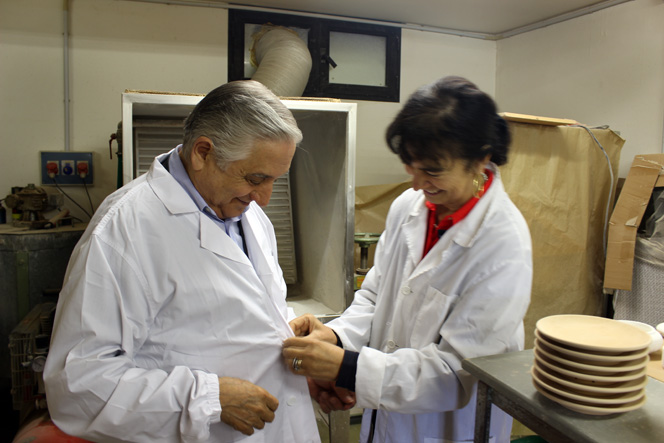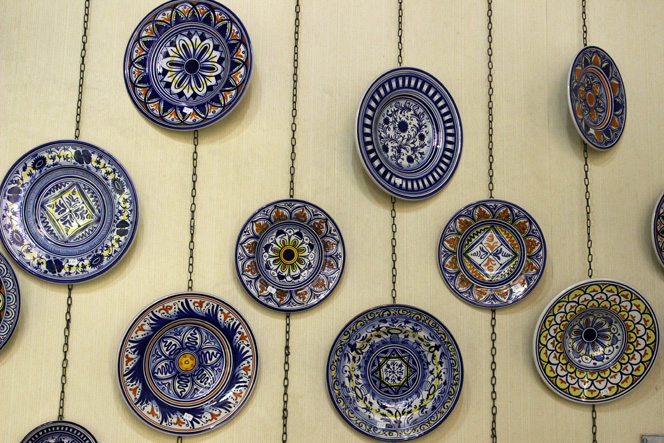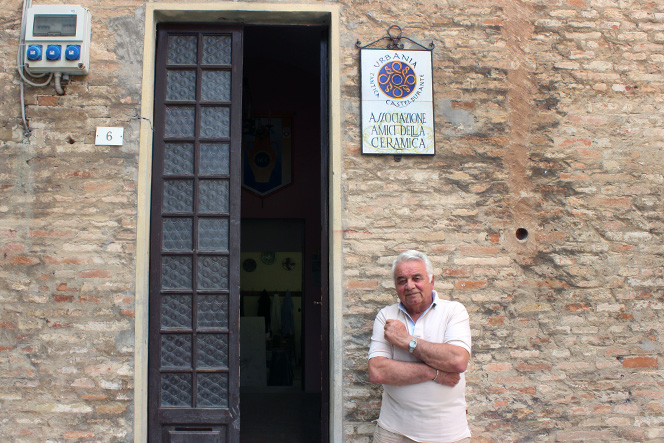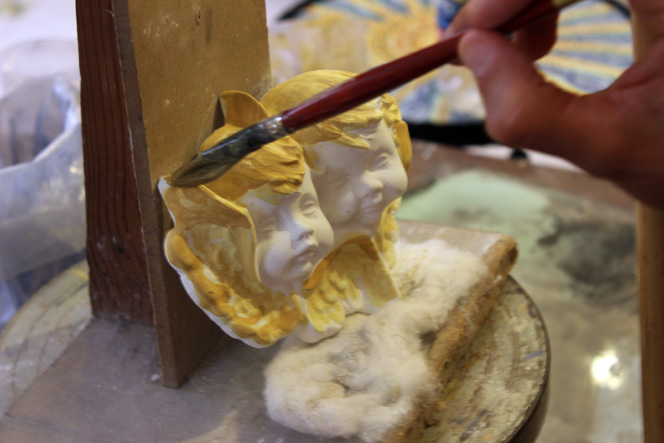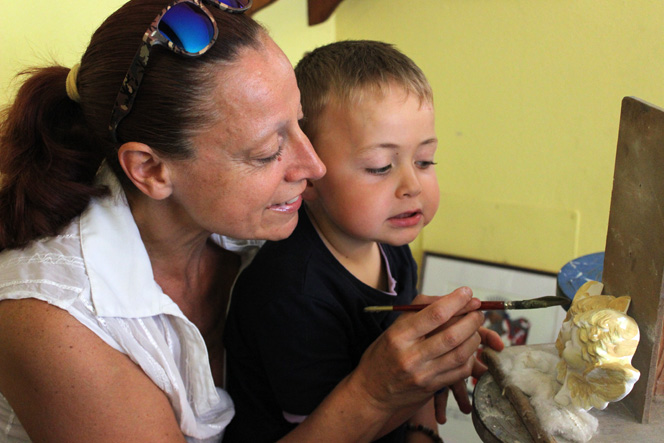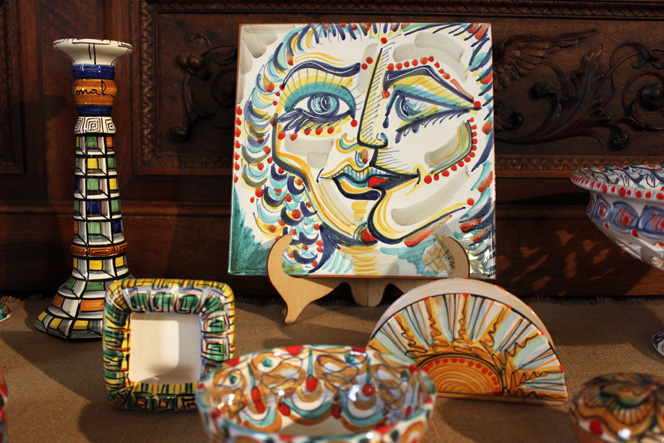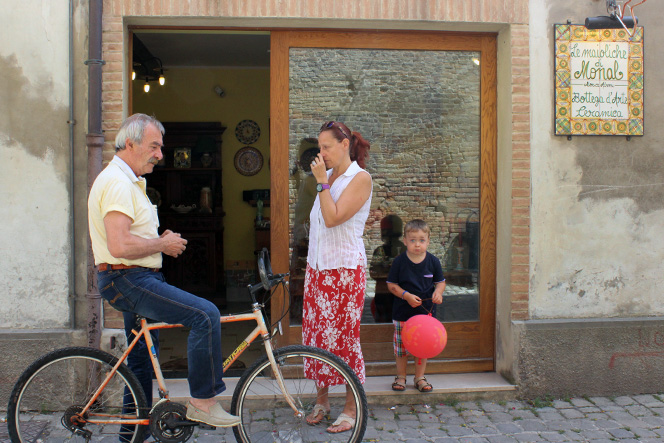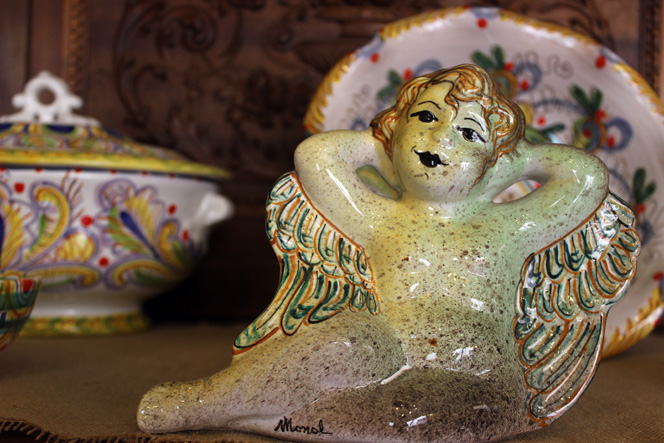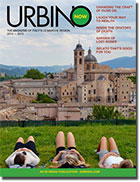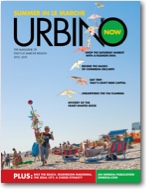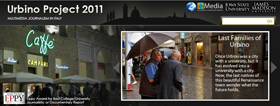Urbania’s Threatened Tradition

Urbania’s majolica ceramics have been renowned since the Renaissance. Is that fame about to fade?
A ceramic plate decorated with a mythological angel sits on the mantelpiece in Ettore Benedetti’s and Claurisa Cosmi’s living room. The plate is 700 years old, a fine example of the Italian style of enameled ceramics called majolica that has made Benedetti’s and Cosmi’s hometown of Urbania, Italy, famous since the Renaissance.
In the studio attached to their home, Benedetti and Cosmi have continued that tradition, making ceramics using the majolica technique for the last 50 years.
But their craft may be dying. The poor economy and changing consumer tastes may spell an end to Urbania’s traditional ceramics. Says Cosmi, “Young people don’t like traditional ceramics now. They prefer more modern art works. They aren’t interested in the old stuff.”
The “old stuff” dates back to before Federico da Montefeltro’s time. The soldier-scholar ruled the region around Urbino from 1422 until his death in 1482. He valued art, and was especially interested in the ceramics of Casteldurante, as Urbania was then named. Before Federico’s time, Casteldurante’s ceramics were simply utilitarian, used in daily life. But under Federico they gained another value—they were considered art. At first, Federico gave the ceramics to his guests as presents, but later his aim was to impress others.
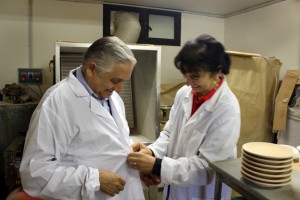
Claurisa Cosmi helps her husband Ettore Benedetti put on his smock in their studio, which is attached to their home. They have worked together, making ceramics, for 50 years.
During the Renaissance, 40 kilns operated in Casteldurante. The potters gathered special clay from the banks of the Metauro River that flows past the town. After shaping the plates and pots, they fired and glazed them using the technique now known as majolica. Present-day potter Monica Alvoni describes the ancient method: “According to this technique we bake the clay two times. The first time at 940 degrees Celsius and the second time at 970 degrees Celsius. That is in Italian called biscotti. We coat the biscotti with a special white liquid [a tin-based enamel]. Thanks to [the enamel] the baked clay becomes glazed ceramics. After this [we] paint and decorate the ceramics.”
Urbania’s traditional ceramics use few colors—blue, orange, and yellow. “The color blue is very characteristic of our ceramics,” says Alvoni. “Thanks to this color people can recognize Casteldurante majolica.” The designs include images from the bible and mythology, landscapes of Urbania, and portraits of Duke Federico da Montefeltro. According to Silvio Biagini, a founder of the Amici della Ceramica (Friends of Ceramics), “During 15th and 16th century, hundreds of thousands of Casteldurante’s ceramic pieces were produced in this territory. They are now in many of the major European museums.”
Biagini and two friends started the ceramics association 20 years ago, in part to support the traditional craft, which had started to decline in popularity. Now 70, Biagini closed his own pottery shop last year. The vice-president of the association, Tinoush Shariat Panahy, says, “Ten years ago there were 12 ceramic shops in Urbania because the Italian government was supporting potters and the government was encouraging to potters. They didn’t want lose this tradition. However, when they stopped supporting potters, the closings of ceramic shops started very rapidly.” Now, there are just 12 potters and four ceramic stores in Urbania.
Three of the stores offer traditional ceramics, including Benedetti’s and Cosmi’s shop, Ceramiche d’Arte Ettore Benedetti. Ettore Benedetti started to work at 11, when renowned potter Federico Melis saw Benedetti making drawings of horses and offered him work painting ceramics. Cosmi began working alongside her future husband when she 14 years old. Now, after half a century at their craft, they are afraid Casteldurante’s ceramics may disappear. Benedetti blames the decline on changing interests: “Young people don’t like old materials like ceramics. They even use plastic in their furniture. They don’t like the colors of ceramics. They don’t have the knowledge to understand its value.”
Alvoni, owner of the shop Le Maioliche di Monal, is the unique modern potter in Urbania. In business for 24 years, she trained in the traditional techniques and still uses the majolica method, but creates pottery with modern shapes and designs. But even her modern styles are not enough to ensure a good business. She blames the poor economy and the change from the lira to the euro, which made products appear more costly. “When I compare today’s sales to ten years ago, there is a fifty percent decline,” she says. In the winters, when few tourists are around, business is so bad that Alvoni usually closes her shop.
Even so, Alvoni is optimistic for the future: “The period of economic crisis is quite problematic, but I think even if the situation doesn’t change, young people will want to continue on this work.”
Biagini echoes Alvoni’s optimism. For him, ceramics are part of the city and the culture: “Casteldurante’s ceramics will never disappear.”
This article also appears in Urbino Now magazine’s Arte e Cultura section. You can read all the magazine articles in print by ordering a copy from MagCloud.



